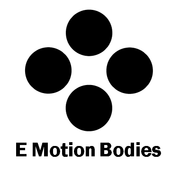Dance, an artistic expression as old as humanity itself, has evolved over the centuries, adapting to changing cultures, beliefs and lifestyles. From its modest ritual origins to globalized contemporary expressions, dance has left an indelible mark on the history of humanity.
1. Prehistoric Roots: Dance goes back to the most primitive roots of humanity. In prehistoric societies, human beings found movement as a form of communication and expression. The ritual dances had the purpose of connecting with the divine, celebrating nature and reinforcing social ties within the community.
2. Antiquity and Ancient Civilizations: As ancient civilizations flourished, dance became integrated into religious ceremonies, festivals, and social events. In ancient Greece, dance was linked to the arts, and theatrical performances often incorporated elaborate choreography. In Egypt, dances were an integral part of religious rituals and festive celebrations.
3. Renaissance and Classical Ballet: The European Renaissance marked a period of artistic refinement, and dance was no exception. In European courts, dance academies emerged and techniques were formalized. Classical ballet, with its graceful movements and elaborate stories, became a distinctive art form.
4. Romantic Revolution and Emotional Narratives: In the 18th and 19th centuries, classical ballet experienced a romantic revolution. More complex and emotional narratives were introduced, deviating from mythological plots towards more personal and sentimental stories. Dance became a deeper expression of human emotions.
5. 20th Century: Modern Dance and Artistic Revolution: The 20th century witnessed a revolution in dance with the emergence of modern dance. Pioneers like Isadora Duncan freed dance from the restrictions of classical ballet, embracing the body's most natural expression. Martha Graham, another prominent figure, introduced abstract technique and forms, shaping contemporary dance.
6. Diversification of Styles and Cultural Fusion: As the 20th century progressed, dance diversified even more. Styles such as jazz, tap, contemporary dance and hip-hop emerged. Dance ceased to be an elite form and became an accessible and representative expression of diverse communities. Cultural fusion became evident, with artists incorporating elements from different traditions in their choreography.
7. Globalization and 21st Century Dance: In the 21st century, globalization has taken dance to new heights. Styles such as hip-hop and urban dance, born in urban communities, have become global phenomena. The ease of communication has allowed the fusion of dance styles from various parts of the world, creating a rich and eclectic palette of artistic expression.
8. Dance as a Universal Language: In summary, the history of dance is a fascinating journey through human and cultural evolution. From prehistoric ritual dances to contemporary expressions, dance has been a universal language that transcends barriers. It has been a means to celebrate, communicate, express emotions, and ultimately connect with our shared humanity. Dance remains a dynamic and vibrant force, constantly adapting to the changing realities of the world and leaving an indelible mark on the history of human creativity.
